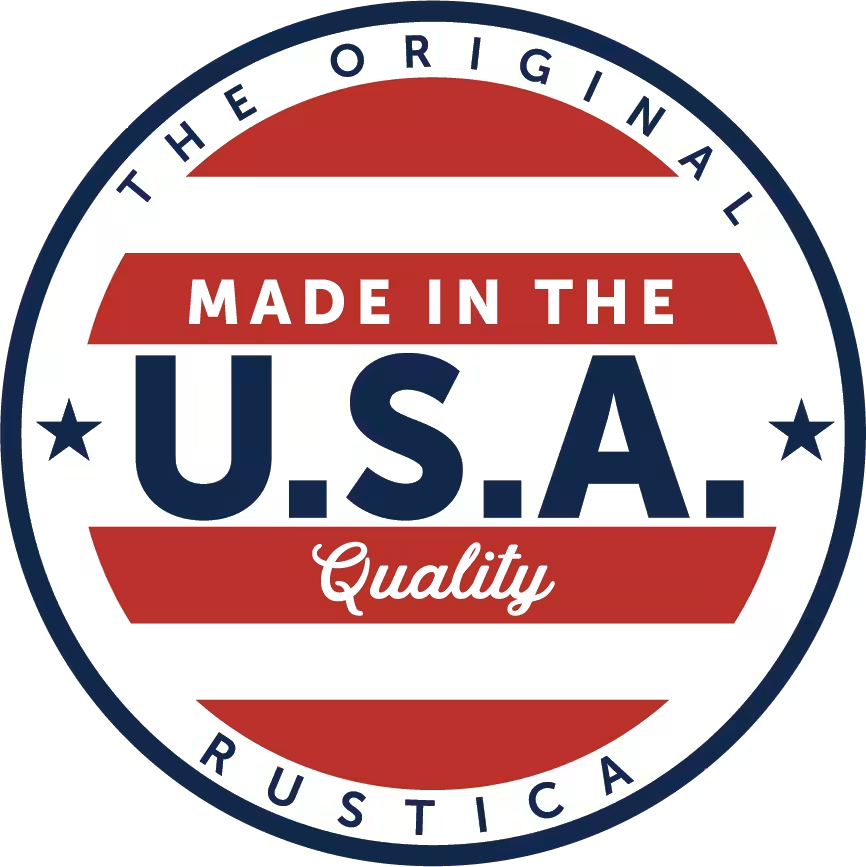11 Types of Window Glazing
- Single Glaze
- Double Glaze
- Clear Glass
- Low E Glass
- Heat Retention Glass
- Tempered Glass
- Laminated Glass
- Obscured Glass
- Tinted Glass
- Insulated Glass
- Mirrored Glass
What is Window Glaze?
Window glaze refers to the glass portion of a window. Window glass is often described as the window pane, so glaze refers to the glass window pane. A single pane window is also known as a single glazed window or single glazing. Double pane equals double glaze; triple pane equals triple glaze, and so on and so forth.Often, people think glazing refers to a special coating added to the glass pane, which infers some windows are glazed, while others are not. This is not the case. Glazing does not refer to a coating added to the glass in the context of windows. Every window has glazing, as every window has glass, whether that glass has special treatments or not.
Window glazing is important because it can protect your home’s interior from UV rays, outside noise, weather, and moisture. Moreover, glazing helps stabilize your home’s internal temperature.
Today, there are several types of glazing, each with its unique advantages. Some are stronger than others with additional security benefits, while others are the top choice for maximum energy efficiency and UV protection. Learning the difference between window glazes can help you choose the best type of window glaze for your home or business.
While there are several different types of windows, such as casement windows, picture windows, or double hung windows, glazing is an intricate part of them all. No matter the window type or style you prefer, glazing will always be a component to consider.
What is the Difference Between Glass and Glazing
When it comes to window manufacturing, glazing specifically refers to the glass pane or panes installed into a metal, vinyl, or wood window frame. Glazing and glass are interchangeable terms when discussing windows or doors. However, glazing usually isn’t used to describe glass in any other context. In short, when it comes to window terminology, there is no difference between glass and glazing when discussing the window pane.That said, glazing can also refer to a window glazing compound, such as a glazing putty that holds the glass in place inside the window. In this context, glazing is both a noun and a verb, as it describes the glazing compound used to seal the window and the action of applying the glazing putty.
If you ever speak to a window manufacturer and they are discussing window glazing, don’t be afraid to ask for clarification as to what glazing they’re referring to. With the term glazing meaning two different things, no one will blame you for wanting to clarify.
For the purposes of this article, every time the term glazing or glaze is used, it’s referring to the glass window pane, not the window glazing compound used to seal the window.
11 Types of Window Glazing
Now that we’ve covered what window glazing is, let’s talk about the different types available when purchasing a new window.1. Single Glaze
A single glazed window is a window with a single glass pane. While single glazed windows used to be the standard, they are no longer as common because they are the least energy efficient window glaze on the market. Not only are they the least energy efficient, but they also have the worst performance when it comes to sound and UV reduction and security. While a single glazed window is the cheapest option on the market, it will cost you more in energy bills down the road.It’s normal for an old window in an older home to have a single glazed window. If you’re looking for replacement windows to upgrade your home’s energy efficiency and value, you’ll want to consider double glazed or triple glazed windows.
2. Double Glaze
A double glaze window, or dual pane window, is a window with two glass panes. The panes are separated by an open-air space. Often, this chamber between the glass panes is filled with a nontoxic gas to increase the glass’s insulation, which increases its ability to block heat transfer and sound transmission.Double glaze is the most popular type of glaze on the market today, as it’s a reasonable price and energy efficient. Double glaze windows provide more protection from intruders, reduced condensation, and less disturbance from external noise. Plus, it’s a sustainable and long-term solution to maintain your home’s internal temperature because it effectively insulates the home and prevents air from seeping in or out. Compared to single pane windows, double glazed windows won’t cause your heating and cooling system to kick on as frequently.
Double glaze windows are 20 to 30 times more energy efficient than single glaze windows. You can test this yourself by placing your hand against a single or double pane window. The internal side of the double pane window should be the same temperature as the room (or close to it), whereas a single pane window will probably be hot or cold to the touch, depending on the outside temperature.
Heads up: if your double pane window is much colder or hotter than the internal temperature, it’s not performing as well as it should, and you might want to consider replacement windows.
3. Clear Glass
Clear glass is the most common type of window glaze for most homes and businesses. Clear glass is un-tinted and lacks distortion, so there is a clear view of the outside world. Because of this, it also allows for plenty of natural light to enter the home. Because most people want natural light and unobstructed views, clear glass is very popular.Despite its popularity, clear glass isn’t as energy efficient as obscured or tinted glass because it doesn’t block UV rays as effectively. However, clear glass can be treated to enhance its ability to reduce heat transfer and block UV rays. Clear glass that is treated to improve its resistance to UV rays is called low E glass. Clear glass can also be tempered to improve its strength.
This type of window glaze can be used for single, double, or triple pane windows, and can be used for any type of window.
4. Low E Glass
Low E glass, short for low emissivity glass, is a type of glazing created to enhance a window’s insulating performance. A special coating is applied to the glass to minimize the amount of infrared and ultraviolet light that comes through, without minimizing the amount of natural light coming into the space. This coating is microscopically thin, and isn’t visible to the naked eye.Low E glass is a transparent coating, so in the summer, it reflects the heat away from the home, keeping internal temperatures cooler. In the winter, it reflects the warmth from your house back into the home so it doesn’t escape through the glass. This specialized window glazing is the top choice for energy efficiency and keeping internal temperatures steady.
When choosing Low E glass, there are two types to consider: passive Low E coatings (hard coat) and solar control Low E coatings (soft coat). The difference between them lies in how the coating is applied to the glass, and they both have unique advantages.
For those who live in the United States, the soft coat Low-E glass is recommended, as this coating offers the highest-performing solar control, which means it performs better than the hard coat at keeping the sun’s heat away from the home. The hard coat is preferable in cold climates with mild summers where heat from the sun is welcome.
While it’s an investment up front, Low E glass will pay itself back through lower energy bills. It’s estimated that about 90 percent of window heat loss occurs through the glass. Because of this, you are guaranteed to save quite a bit on heating and cooling bills with Low E glass.
5. Heat Retention Glass
Heat retention glass is a type of Low E coating applied to the inside surface of the interior window pane. This specific window glazing increases thermal insulation by reflecting interior heat into the home.If you live in a cold climate, heat retention glass keeps your home warm and cozy on freezing winter nights. As with any Low E glazing, it will help increase your home’s energy efficiency and decrease energy bills.
6. Tempered Glass
Tempered glass is a type of safety glass you’re likely to have heard of, as it’s used for a variety of functions. Tempered glass differs from annealed glass (common or ordinary glass) by how it breaks and how it’s made.When annealed glass breaks, it shatters into sharp shards. When we think of a moving vehicle or an office building with giant windows, it would be extremely dangerous for sharp shards of glass to fall on those nearby. Tempered glass is much safer, and four times stronger than annealed glass. Rather than shattering into sharp-edged shards when broken, tempered glass breaks into small, dull cubes that pose less of a threat to nearby occupants. Plus, it’s harder to break in the first place because of its strength.
Tempered glass is made from regular glass that has been heated at extreme temperatures—more 1,000 degrees Fahrenheit. Then, the glass is rapidly cooled by a machine that blows frigid air at it. Through exposure to extreme temperatures, the glass changes its structure. The outside of the glass cools much faster than the internal glass, which creates tension internally as the outer surface compresses. This is how glass is “tempered,” and becomes stronger and safer than annealed glass.
This specialized type of glazing is the preferred window glaze for commercial buildings and wherever human safety is a concern. Because it’s harder to break, it’s a preferred window glaze for businesses or homes that want to prevent break-ins. It is also commonly used for household appliances, shower doors, automobiles, glass surfaces, and glass doors.
Tempered glass is a custom window glaze, as it has to be made to size and can’t be cut after going through the heated process, as cutting may damage the tempered structure. Keep this in mind when ordering custom windows if you would like the window to be made of tempered glass.
7. Laminated Glass
Another type of safety glass or glazing is laminated glass. Laminated glass doesn’t go through a heat process like tempered glass. Rather, it’s made of two or more panes of annealed glass joined together by a layer of polyvinyl butyral (PVB), a type of plastic. Laminated glass could have several layers of glass and PVB, or just one layer of PVB between glass panels. The more layers of PVB there are, the safer and stronger the glass is.The biggest advantage of laminated glass is that it doesn’t shatter to the ground when broken. Rather, the broken glass sticks to the plastic. The PVB also makes laminated glass much harder to break than regular annealed glass. Other benefits of laminated glass include soundproofing, UV radiation reduction, and the option to have the plastic portion in a clear or tinted finish.
Laminated glass is ideal for commercial storefront windows, as it protects the building from break-ins and hazardous sharp, broken glass. It is also beneficial for areas that experience extreme weather, such as large hail, tornadoes, or hurricanes. It obviously isn’t strong enough to hold out against direct pressure from such elements, but it will be much safer to clean up.
This type of window glazing is often used for skylights, automobile windshields, glass doors, glass railings, and glass floors.
Laminated glass is more expensive than tempered glass, but is the preferred choice if you want the best safety glass available. For home windows, tempered glass is more affordable and more common, as broken windows aren’t as much of a concern in a residential setting.
8. Obscured Glass
Obscured glass is a type of glazing that distorts and texturizes the glass. In other words, there isn’t a clear view through the glass. Obscured glass comes in several design patterns.Obscured glass is used for aesthetic and privacy purposes. In areas where privacy is desired, it’s the ideal glass because it still allows light to enter the space, giving an open feeling. Most shower doors are made with obscured glazing, and obscured glass is often found in the bathroom.
Other than privacy, obscured glass offers a characteristic design element to any home or business’s architecture. Just think of old churches and European castles, where every inch of the structure is a piece of art, including the windows. You can achieve that same level of exquisite detail in your home with obscured glass.
When designing a custom window or door with Rustica, we offer an extensive selection of obscured glass designs. Some glass styles are more distorted, which is preferred for privacy, such as overcast, deep freeze, crested, and citrus. For aesthetic detail, fluted, vintage, spectrum, and palm, are the ideal glass styles to choose from.
9. Tinted Glass
Tinted glass is a well-known type of glazing often used in vehicles for an added layer of privacy. That same effect can be achieved on home windows. However, tinted glass isn’t just for privacy, it also provides energy efficiency, sun protection, and security.Tinted glass reduces ultraviolet light transmission. In other words, it lessens the amount of direct sunlight coming into the home. This protects your furniture, carpet, and wooden appliances from fading over time, and also reduce heat from the sun coming through your windows. In this way, it increases your home’s energy efficiency and helps save on cooling costs.
Moreover, tinted glass can protect your health, especially if there is an abundant amount of direct sunlight streaming directly into the windows. It’s well-known that over-exposure to UV radiation can be harmful and increase the risks of skin cancer. Tinted glazing reduces ultraviolet rays by up to 99 percent, depending on the type of tint. This is why office buildings often have tinted windows, as employees typically have to sit at a desk next to the window for many hours.
Lastly, tinted windows can make your home or business feel more secure and private. If you opt for a safety glass that is also tinted, then you increase the safety of your home or business that much more. Feeling safe and secure is so important for our wellbeing, and tinted windows can certainly increase that feeling.
Rustica offers a few different types of tinted glass for windows and doors. Because tint only modifies the color of the glass without changing its basic properties, tint can come in different shades and styles. We offer tint, frosted, and retro as our tinted glass styles.
10. Insulated Glass
Insulated glass could refer to a couple of types of window glaze, including Low E glass and heat retention glass. However, insulated glass units (IGU) specifically refer to windows with two or more glass panes, such as a double pane or a triple pane window, with insulated gas inserted between the window panes.As briefly discussed in the double glazed windows section, this gas is inserted and fills the chamber(s) between the glass panes. The gas used is usually an inert gas, such as krypton, argon, or a mixture of both. But, the type of gas used in insulated glass windows depends on the manufacturer.
The purpose of insulating gas is to diffuse heat transfer, whether that’s heat coming from the sun or heat from the home. Insulated glass stabilizes the home’s temperature by preventing heat loss from internal temperatures. On the other hand, it prevents heat from coming in, which keeps internal temperatures cooler and more comfortable in the summer.
Insulated glass is designed to increase your home or business’s energy efficiency, and is the industry standard for all residential or commercial windows. You can augment your window’s insulating performance by choosing a triple pane window, adding a special coating, such as Low E, or adding a window tint.
11. Mirrored Glass
Now, most home windows aren’t going to have mirror glass, but it may be a special element for a certain window or door in your home. Mirrored glass is just as it sounds: a mirror.Mirror glass is treated with a metallic substance or metal coating that offers mirror-like properties. Or, it’s made by placing a metal coating on one side of a pane of glass and then securing it with a protective sealant.
This type of window glaze is highly decorative and aesthetically pleasing. If designing a custom window with Rustica, you can choose a mirrored window as your glass style, along with all of our other customization options, including the frame material, size, shape, and window style.
Choose The Perfect Window Glaze for Your Residential or Commercial Windows
Now that you’re familiar with window glaze—including what it is, what it isn’t, and the different types available, you’re ready to choose the perfect window glaze for your home or business.Choosing the right window glaze for your home and climate can make all the difference for your home’s energy efficiency. With insulated glass and Low E glazing, you can stabilize your home’s temperature, no matter the season, and save on energy bills each month.
Contact Rustica today if you’re ready to upgrade your home with energy efficient windows! Whether you want to design new or replacement windows, we’d be delighted to help bring your vision to life!







